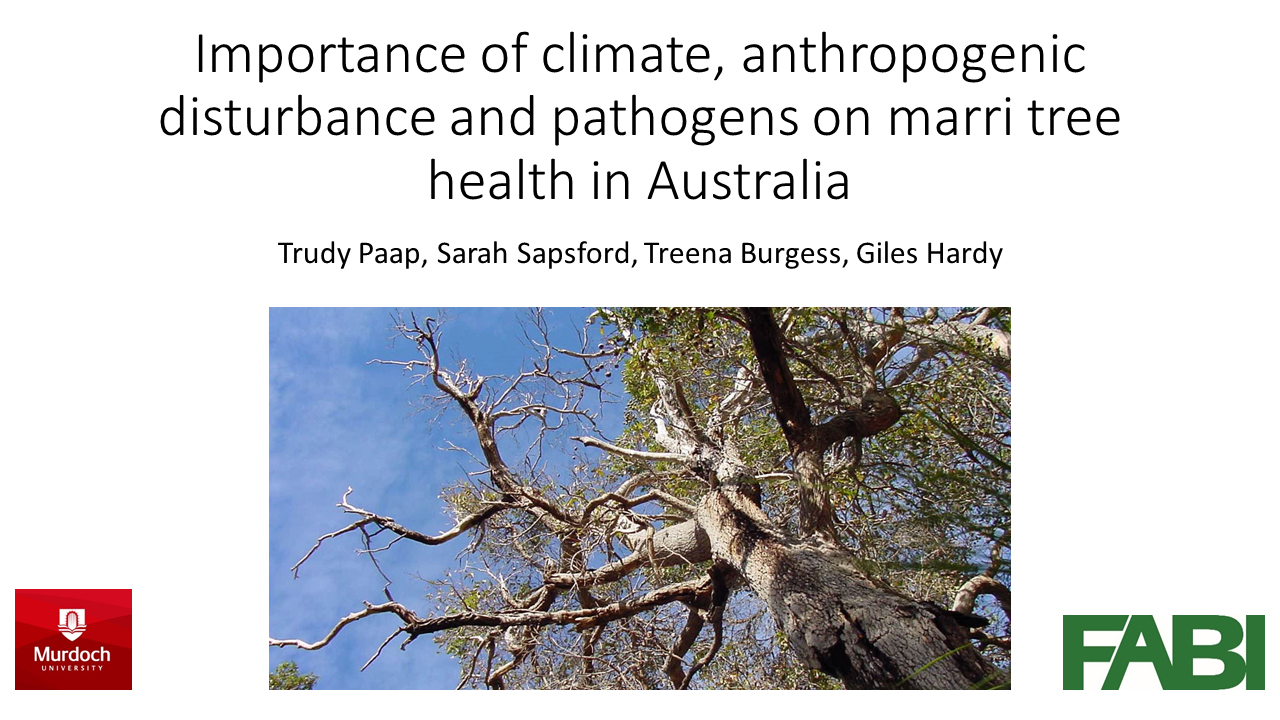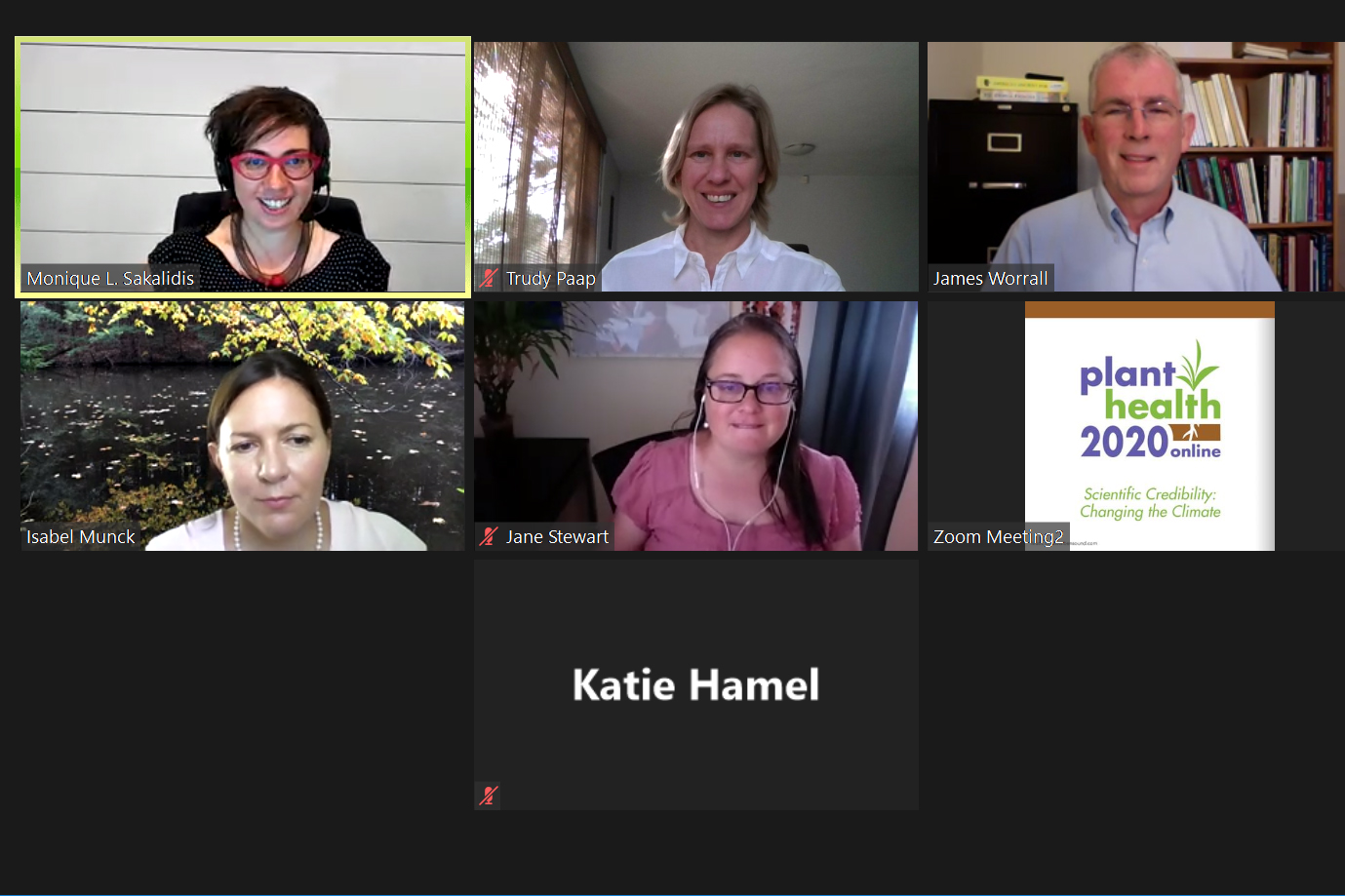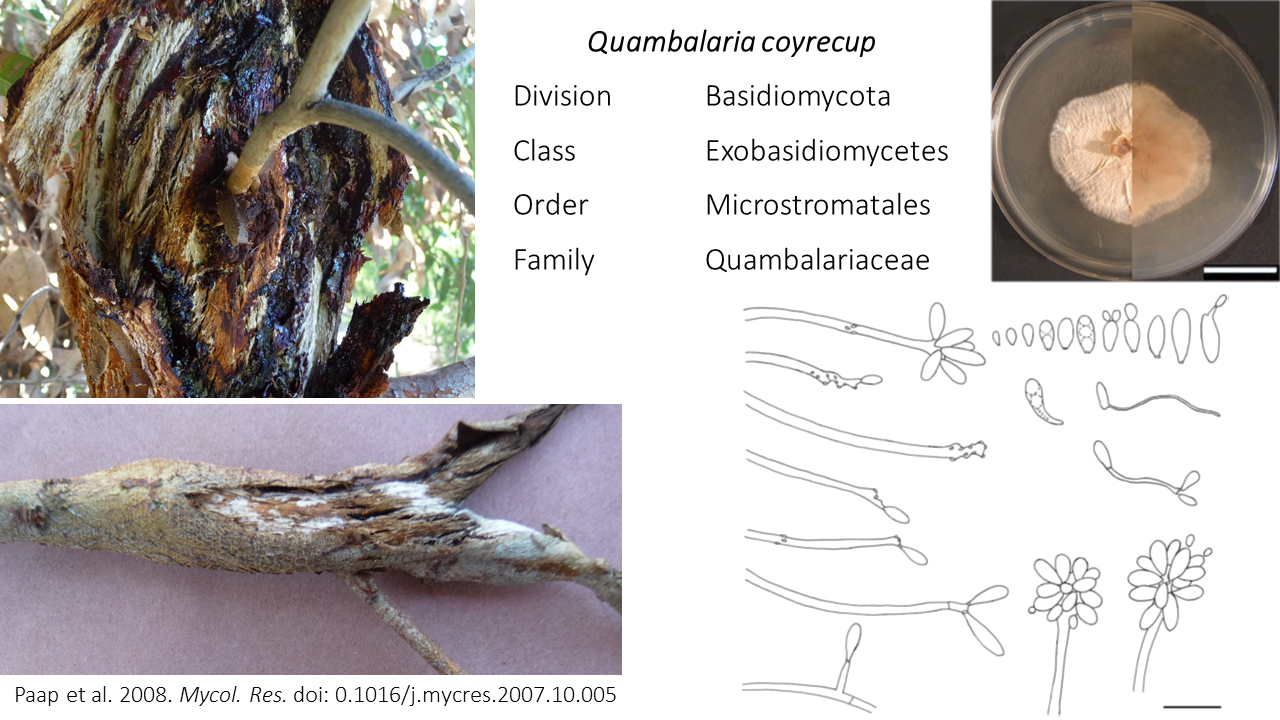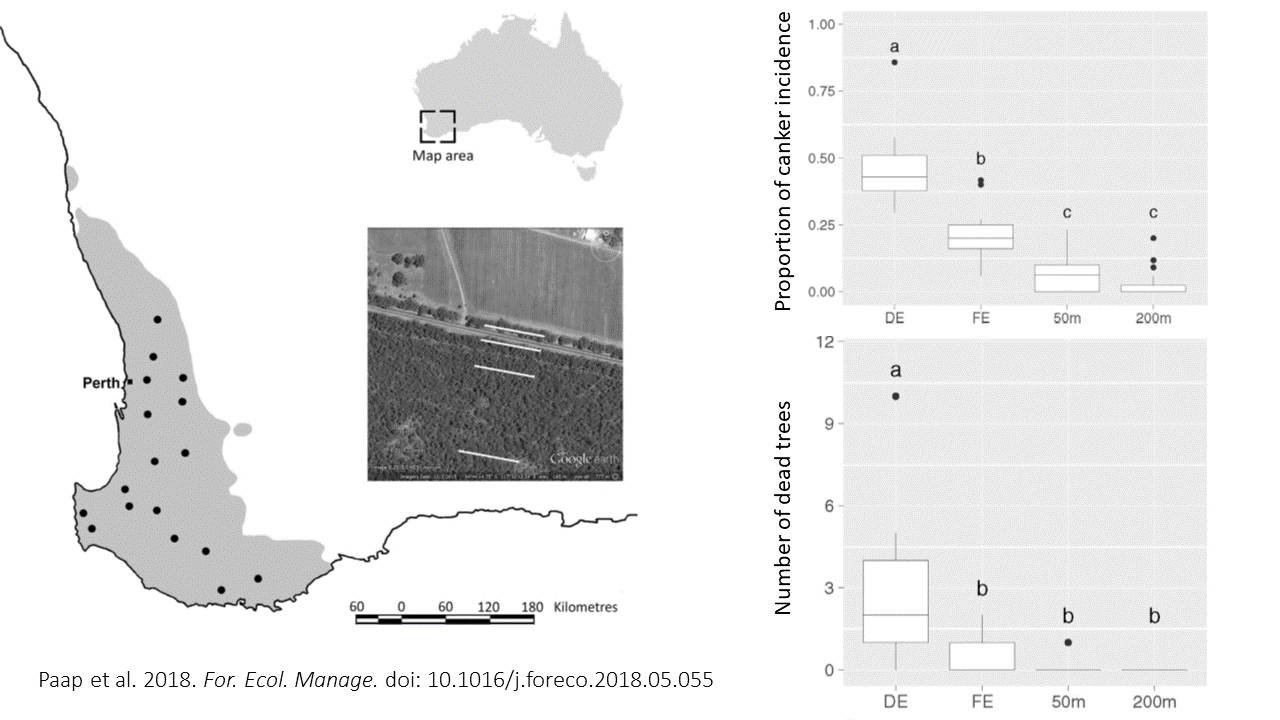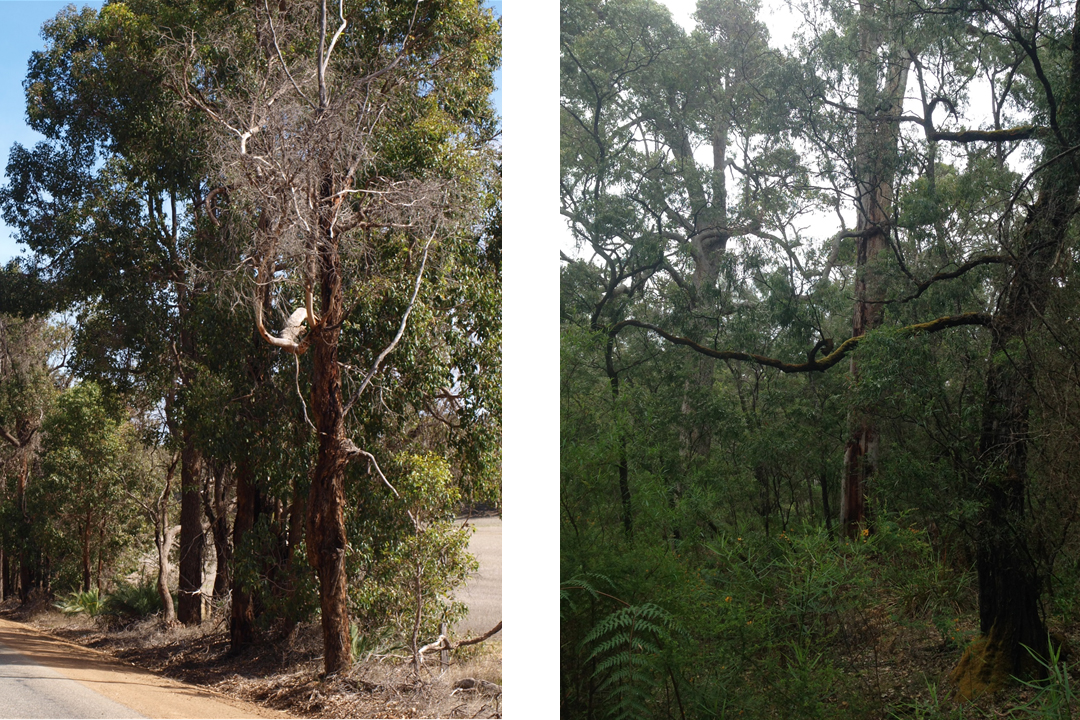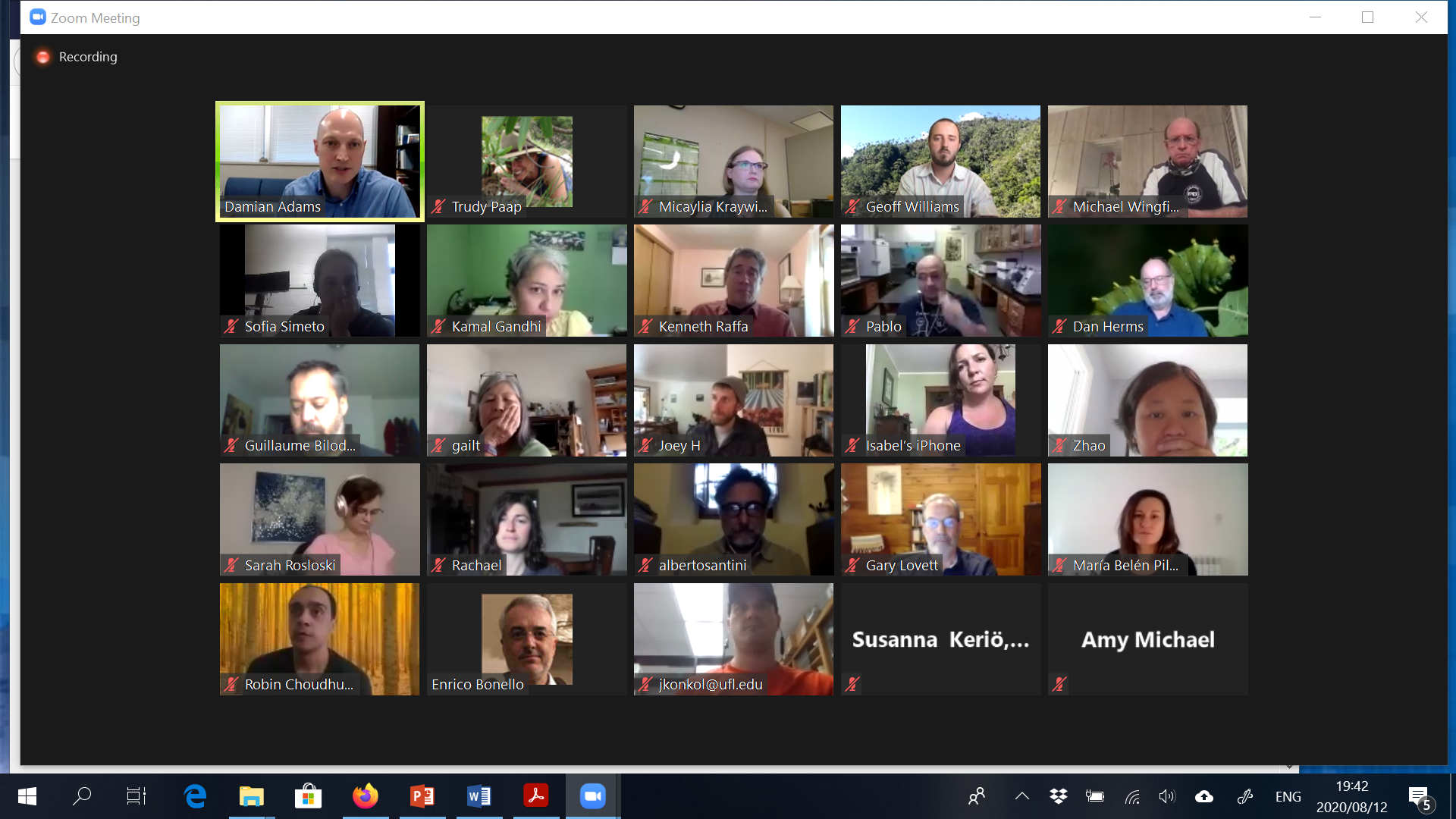FABIans participate in virtual APS Plant Health 2020 meeting 2020-08-18
The first meeting of The American Phytopathological Society (APS) was held in Boston in 1909. Since then, the society has met in person every year. But for the first time in the history of the APS, the Plant Health 2020 annual meeting, held from 10-14 August, was a completely virtual event.
FABI research Fellow Dr Trudy Paap participated as an invited speaker in the special session, ‘Emerging endemic pathogens behaving as exotic invasives in changing climates in forest systems’. Organised by Dr Monique Sakalidis, the session focussed on the growing problem of endemic pathogens causing disease epidemics, as a result of ecosystem resilience breaking down in the face of changing climates and increasing anthropogenic stressors. Trudy presented an overview of 20 years of research into the increased incidence and severity of a canker disease of Corymbia (previously Eucalyptus) calophylla, caused by the endemic fungal pathogen Quambalaria coyrecup, in the south west of Western Australia. This pathogen is one of a number of interesting Basidiomycete fungi that are apparently native to Australia and little-known by forest pathologists, particularly in the Northern Hemisphere. Some of these such as Quambalaria eucalypti have been accidentally introduced into South Africa and Brazil where it causes disease on various Eucalyptus spp.
The session highlighted the complexity of addressing tree health issues in the presence of multiple global change factors. It likely that the next century will see an unprecedented rise in endemic plant pathogens causing disease epidemics, therefore, there is a need for predictive rather than reactive responses to the challenge.
Another highlight of the meeting was an Ideas Café “In search of fresh, tractable solutions to the wicked problem of destructive, non-native forest pathogens” in which approximately 40 forest pathologists from many parts of the world participated. The group including Dr Trudy Paap and Prof. Mike Wingfield entered into energetic “real time” discussions in Zoom seeking solutions to the growing threat of pests and pathogens to the world’s forests. Issues such as how to stem the tide of the increasing numbers of new pest introductions were considered leading to a decision to pursue these issues vigorously in the future.


